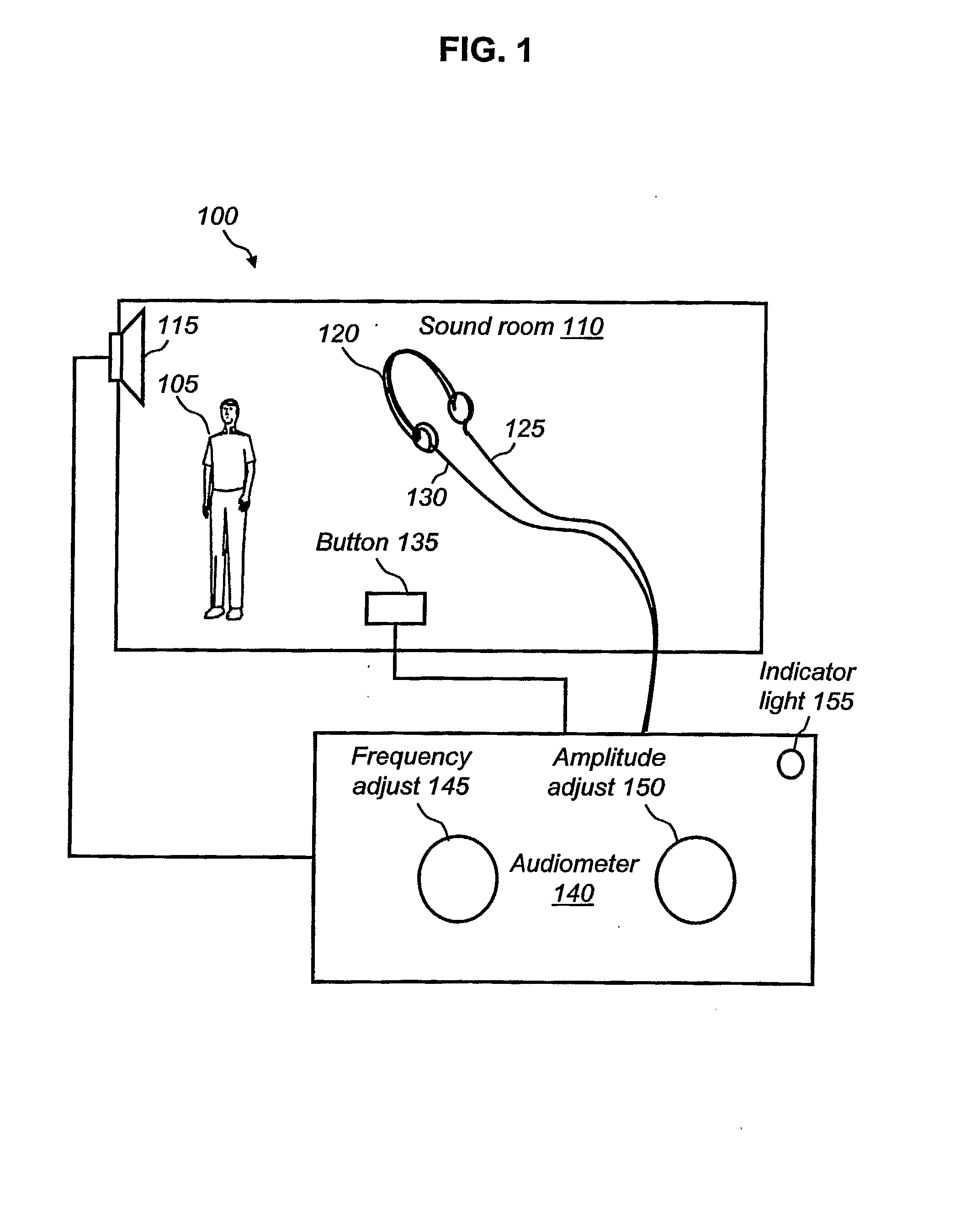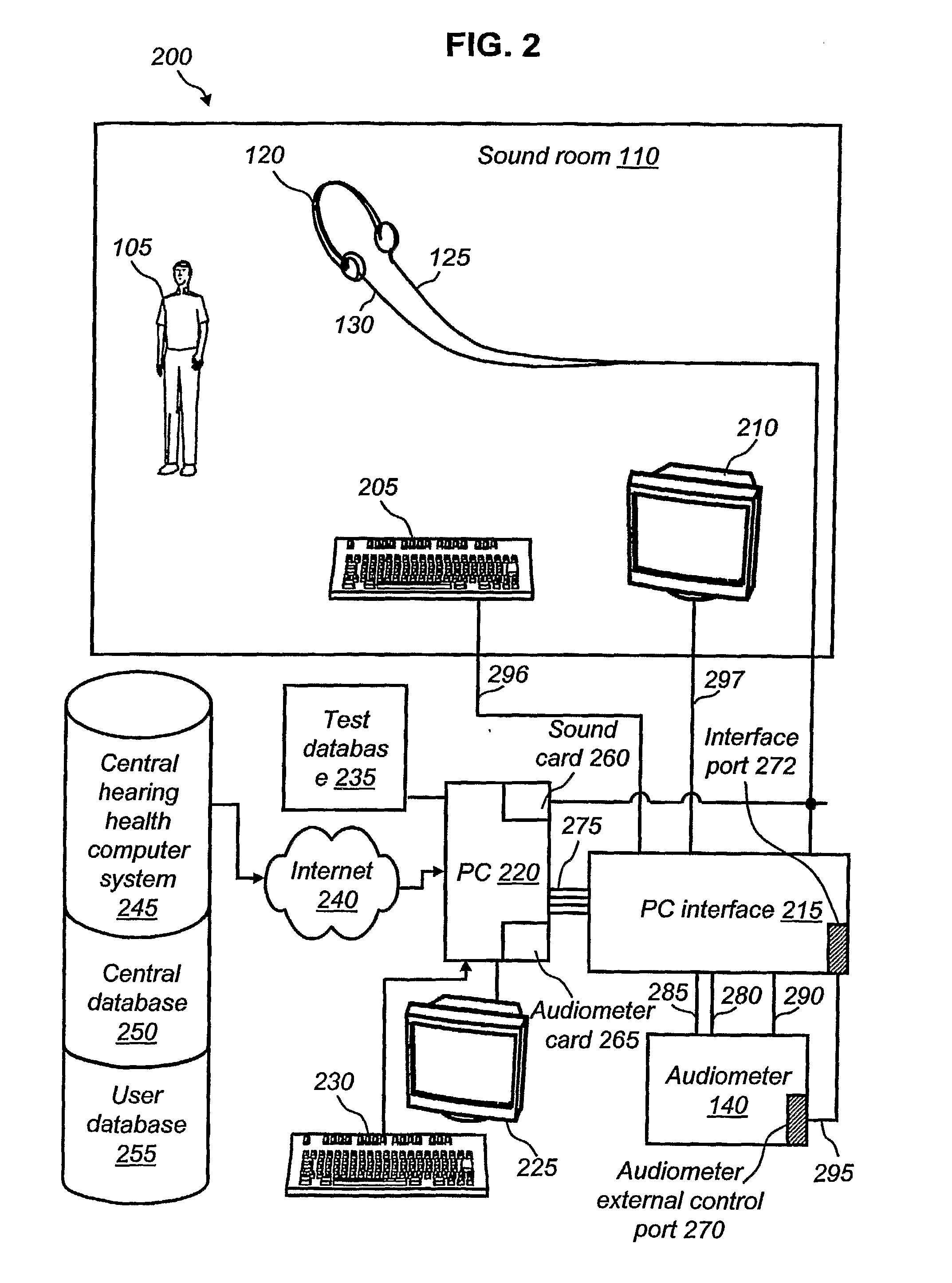Audiologist Equipment Interface User Database For Providing Aural Rehabilitation Of Hearing Loss Across Multiple Dimensions Of Hearing
- Summary
- Abstract
- Description
- Claims
- Application Information
AI Technical Summary
Benefits of technology
Problems solved by technology
Method used
Image
Examples
Embodiment Construction
[0032]A variety of audiometers and their typical use have been described. FIG. 1 illustrates an example of a conventional audiometer system 100. System 100 includes a user 105, a sound room 110, a speaker 115, a pair of headphones 120, a pair of leads 125 and 130, a button 135, and an audiometer 140.
[0033]User 105 is an individual on whom a hearing test is to be administered. User 105 is a generally any individual, but more specifically, an individual in the more than 10% of the population (e.g., twenty-five million Americans) that have hearing loss, including one out of four people older than sixty-five.
[0034]Sound room 110 is any soundproof room that provides a suitable environment for a hearing test.
[0035]Speaker 115 and headphones 120 provide a means for administering a range of tones for testing the hearing of user 105. In a preferred example, user 105 is wearing headphones 120. Leads 125 and 130 connect headphones 120 to audiometer 140. Leads 125 and 130 provide a means to sel...
PUM
 Login to View More
Login to View More Abstract
Description
Claims
Application Information
 Login to View More
Login to View More - R&D
- Intellectual Property
- Life Sciences
- Materials
- Tech Scout
- Unparalleled Data Quality
- Higher Quality Content
- 60% Fewer Hallucinations
Browse by: Latest US Patents, China's latest patents, Technical Efficacy Thesaurus, Application Domain, Technology Topic, Popular Technical Reports.
© 2025 PatSnap. All rights reserved.Legal|Privacy policy|Modern Slavery Act Transparency Statement|Sitemap|About US| Contact US: help@patsnap.com



